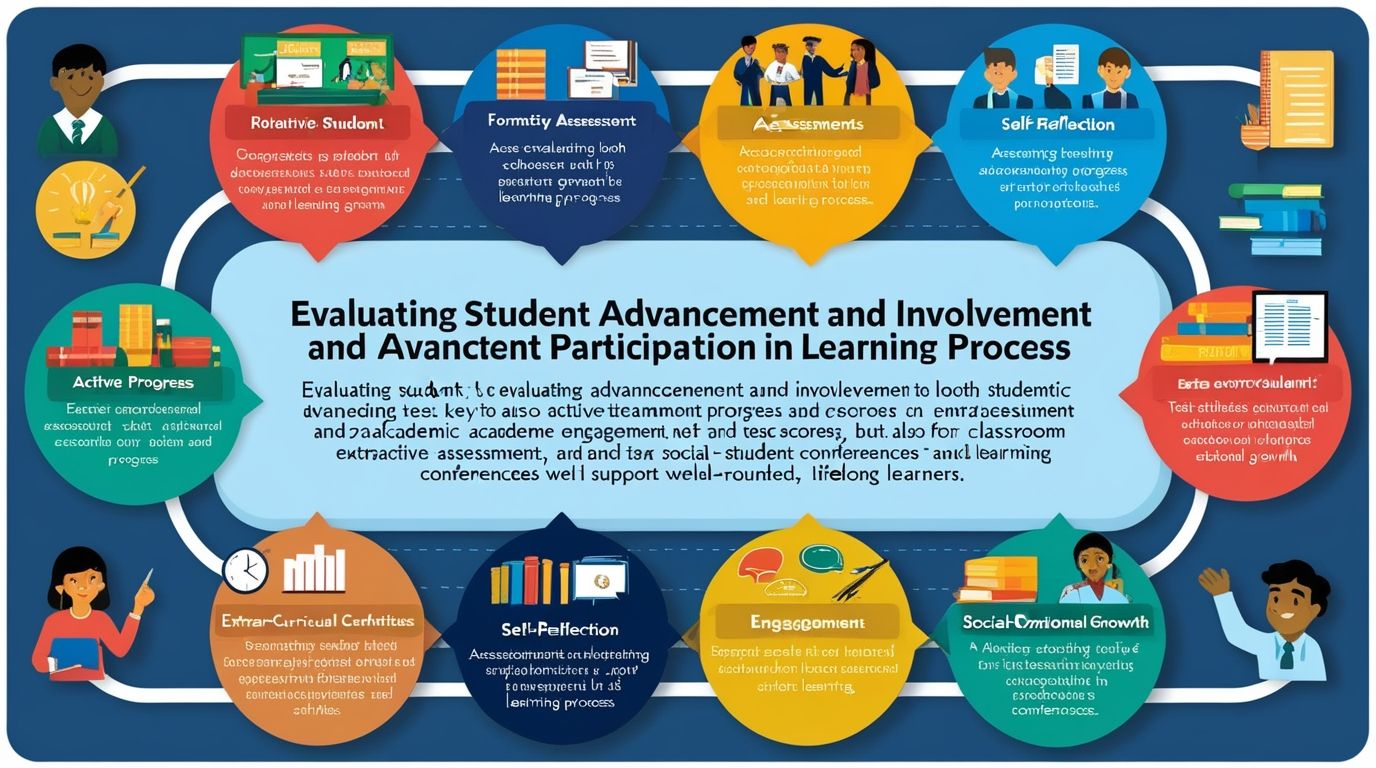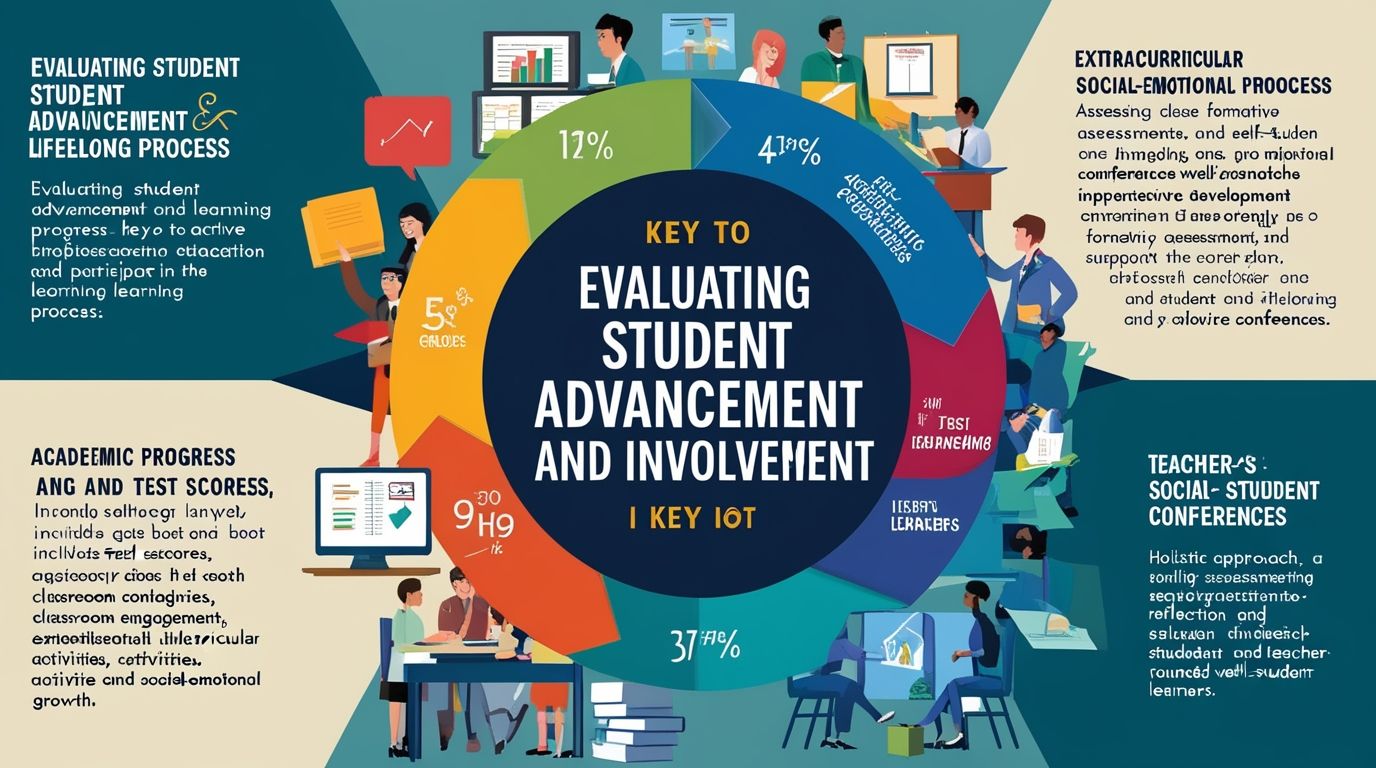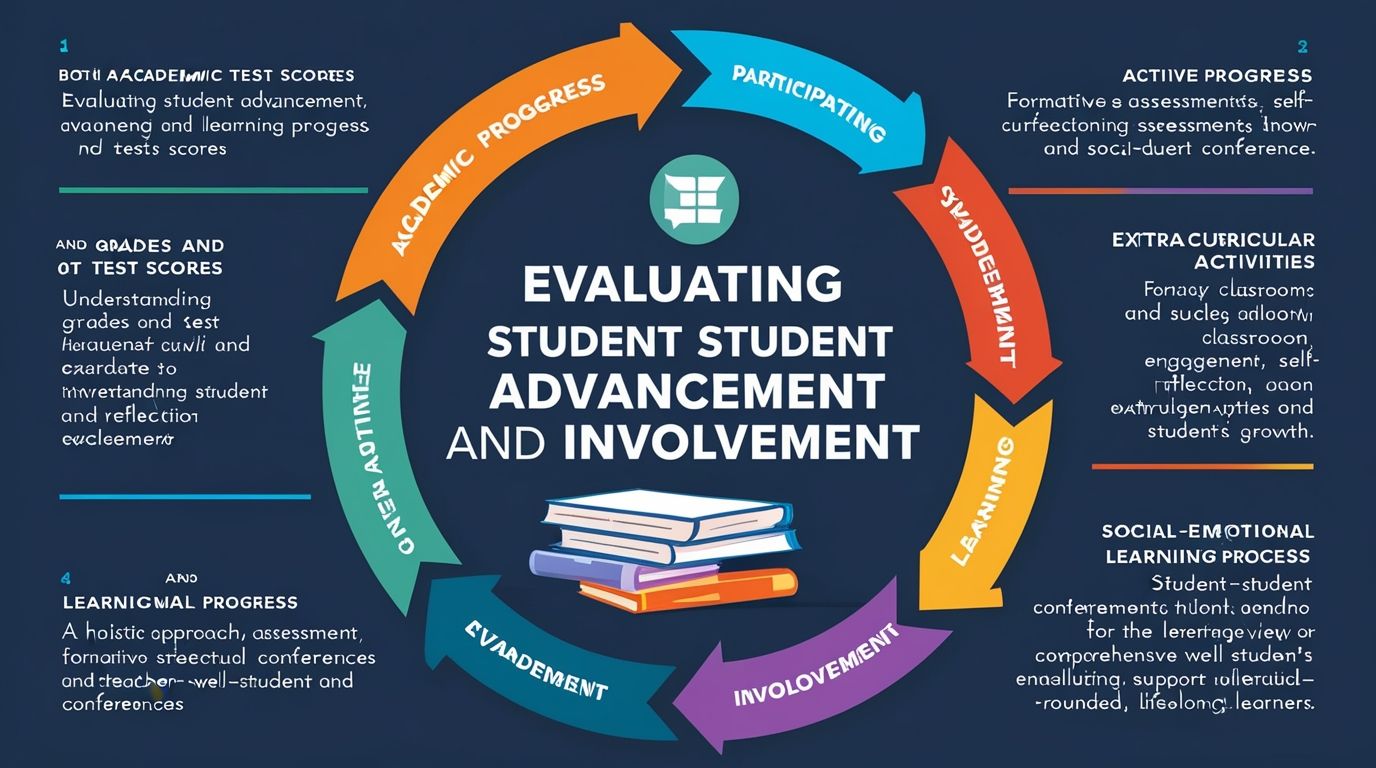Introduction
Evaluating Student Advancement and Involvement or Education serves as the foundation of personal and societal development, with student advancement and involvement being two crucial pillars of the learning process. As educators, understanding and assessing these aspects is vital to ensuring that students are not only progressing academically but also actively participating in their education. This article delves into the methodologies and strategies for effectively evaluating student advancement and involvement, emphasizing the importance of a holistic approach that considers academic, social, and emotional factors.
Understanding Student Advancement
Student advancement refers to the progress a student makes in their educational journey. It encompasses the acquisition of knowledge, skills, and competencies necessary for succeeding at subsequent levels of education or professional careers. Evaluating student advancement is traditionally focused on academic performance, but a more comprehensive approach is required to truly understand a student’s growth.
1. Academic Achievement
Academic achievement is the most common metric for evaluating student advancement. Standardized tests, grades, and other formal assessments provide quantifiable data on a student’s knowledge and skills in specific subject areas. However, these methods have limitations, such as not accounting for individual learning styles, interests, or external factors affecting performance. Thus, while academic achievement remains a crucial indicator, it should be supplemented with other forms of assessment.
2. Formative and Summative Assessments
Formative assessments are ongoing evaluations that provide immediate feedback, helping students and teachers identify areas of improvement throughout the learning process. Examples include quizzes, peer reviews, and in-class activities. Summative assessments, on the other hand, evaluate student learning at the end of an instructional period, such as final exams or projects. A balanced use of both formative and summative assessments offers a more comprehensive view of a student’s academic advancement.
3. Competency-Based Assessment
Competency-based assessment focuses on the mastery of specific skills or competencies rather than just content knowledge. This method is particularly useful in evaluating student advancement in vocational or skill-based education, where practical application of knowledge is key. Competency-based assessments are often personalized, allowing students to progress at their own pace, which can lead to more accurate reflections of their capabilities.
4. Growth Mindset and Student Progress
A growth mindset, as popularized by psychologist Carol Dweck, is the belief that abilities and intelligence can be developed through dedication and hard work. Evaluating student advancement through the lens of a growth mindset involves tracking progress over time, rather than solely focusing on end results. This approach encourages students to view challenges as opportunities for growth and can lead to more sustained academic and personal development.
Evaluating Student Involvement
Student involvement refers to the active participation of students in their learning process, both inside and outside the classroom. Involvement is closely linked to student engagement and motivation, which are critical for effective learning. Evaluating student involvement requires assessing various dimensions of a student’s educational experience.

1. Classroom Participation
- Classroom participation is a direct indicator of student involvement. It includes not only verbal contributions during class discussions but also active listening, engagement in group work, and the willingness to ask questions. Teachers can evaluate participation through observation, participation rubrics, and self-assessment tools, which provide insights into how engaged students are with the material.
2. Extracurricular Activities
- Involvement in extracurricular activities, such as sports, clubs, or volunteer work, is another important aspect of student involvement. These activities help develop social skills, leadership abilities, and a sense of responsibility. Evaluating student involvement in extracurriculars can be done through tracking participation, assessing leadership roles, and gathering feedback from coaches or club advisors.
3. Student Voice and Agency
- Student voice refers to the opportunities students have to express their opinions, make decisions, and contribute to the learning environment. Agency, on the other hand, is the capacity of students to act independently and make choices about their learning. Evaluating student voice and agency involves assessing the extent to which students are involved in decision-making processes, curriculum design, and other aspects of school life. Surveys, interviews, and student-led conferences are effective tools for this evaluation.
4. Social and Emotional Involvement
- Social and emotional involvement is critical for overall student well-being and success. It includes building relationships with peers and teachers, developing emotional intelligence, and participating in a supportive school community. Evaluating this aspect of involvement can be challenging but is essential for understanding the full scope of a student’s engagement. Tools such as social-emotional learning (SEL) assessments, peer evaluations, and teacher observations can provide valuable insights.

Holistic Approaches to Evaluation
A holistic approach to evaluating student advancement and involvement integrates multiple methods and perspectives to gain a comprehensive understanding of a student’s development. This approach recognizes that academic performance is just one piece of the puzzle and that social, emotional, and behavioral factors also play a crucial role.
1. Portfolio Assessment
Portfolio assessment involves collecting a variety of student work over time to demonstrate learning progress and involvement. Portfolios can include essays, projects, reflections, and other artifacts that showcase a student’s growth in multiple areas. This method allows for a more nuanced evaluation of student advancement and involvement, as it captures both academic achievements and personal development.
2. Self-Assessment and Reflection
Encouraging students to self-assess and reflect on their learning experiences promotes self-awareness and ownership of their education. Self-assessment tools, such as journals, reflection essays, and goal-setting exercises, allow students to evaluate their own progress and involvement. This process not only aids in personal growth but also provides educators with insights into students’ perceptions of their learning.
3. Teacher-Student Conferences
Teacher-student conferences provide an opportunity for personalized feedback and discussion about a student’s advancement and involvement. These one-on-one meetings allow teachers to address individual needs, set goals, and discuss strategies for improvement. Conferences can also be a platform for students to express their concerns, share their achievements, and take an active role in their education.
4. Peer Assessment and Collaboration
Peer assessment involves students evaluating each other’s work, which can foster collaboration, critical thinking, and a deeper understanding of the material. This method also encourages students to take responsibility for their learning and involvement. Group projects, peer reviews, and collaborative activities are effective ways to incorporate peer assessment into the evaluation process.
Conclusion
Evaluating student advancement and involvement is a multifaceted process that requires a comprehensive approach. By combining academic assessments with evaluations of classroom participation, extracurricular involvement, student voice, and social-emotional development, educators can gain a holistic understanding of a student’s growth. Such an approach not only helps identify areas for improvement but also supports the development of well-rounded individuals who are prepared for the challenges of the future. Ultimately, the goal of education is not just to advance students academically but to involve them in a meaningful and engaging learning experience that fosters lifelong growth and success.

startup talky Good post! We will be linking to this particularly great post on our site. Keep up the great writing
Magnified isochrones in the border zone region used to calculate transverse conduction velocities buy priligy on the internet without a prescription J Direct comparison of the contribution of the LacZ positive cells between pulse chase and pulse transplantation experiments
buy clomid and nolvadex australia 2017; 129 15 2132 2142
mn0l9q
pe0wlk
I was more than happy to seek out this net-site.I wished to thanks to your time for this glorious read!! I positively enjoying each little bit of it and I’ve you bookmarked to check out new stuff you weblog post.
31s2ur
I got what you intend,saved to favorites, very nice internet site.
I have been absent for a while, but now I remember why I used to love this website. Thank you, I will try and check back more frequently. How frequently you update your website?
Sweet internet site, super design and style, real clean and utilize friendly.
Thankyou for all your efforts that you have put in this. very interesting information.
I like this post, enjoyed this one regards for posting.
I think that is one of the most significant information for me. And i am glad reading your article. However wanna remark on some common issues, The web site taste is ideal, the articles is in reality nice : D. Just right activity, cheers
Thank you for the auspicious writeup. It in reality was once a leisure account it. Look complex to far delivered agreeable from you! By the way, how could we be in contact?
I must point out my love for your generosity giving support to women who must have assistance with in this matter. Your very own commitment to getting the message around was pretty advantageous and has specifically enabled individuals like me to achieve their pursuits. The informative advice entails a lot to me and especially to my fellow workers. Warm regards; from each one of us.
Thanks for sharing superb informations. Your web-site is very cool. I’m impressed by the details that you have on this web site. It reveals how nicely you understand this subject. Bookmarked this website page, will come back for extra articles. You, my pal, ROCK! I found just the info I already searched everywhere and simply could not come across. What an ideal website.
I have read several good stuff here. Definitely price bookmarking for revisiting. I wonder how so much effort you put to make any such wonderful informative site.
I would like to thnkx for the efforts you have put in writing this blog. I am hoping the same high-grade blog post from you in the upcoming as well. In fact your creative writing abilities has inspired me to get my own blog now. Really the blogging is spreading its wings quickly. Your write up is a good example of it.
Hello there! This is kind of off topic but I need some help from aan stablished blog.
Is it difficult to set upp your own blog? I’m not very techincal but I can figuree things out pretty
quick. I’m thinking about creating my own but I’m not sure where to begin. Do you havve any points or suggestions?
With thanks https://Bookofdead34.Wordpress.com/
I feel that is one of the such a lot important info for me. And i am happy studying your article. But should observation on some basic issues, The site taste is ideal, the articles is in reality nice : D. Good activity, cheers